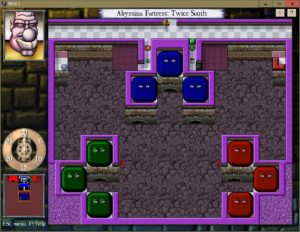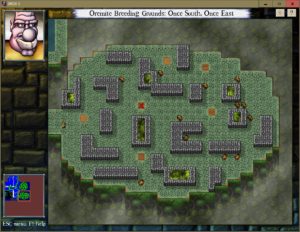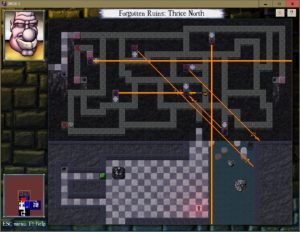Gemcraft: The Shadows I’m Apparently Chasing
I mentioned before that there’s a type of randomly-appearing monster in Gemcraft: Chasing Shadows called a Shadow, described as an “avatar of the Forgotten”. A bigger Shadow was also the final boss in the previous game, Gemcraft: Labyrinth; the smaller Shadows have fewer hit points but are otherwise basically unchanged from the original. (It reminds me a little of beating the Slayer at the end of DROD: Journey to Rooted Hold and then facing “Slayer trainees” in its sequel.) Shadows have by far the most complex behavior of any enemy type in the game. They drift around the battlefield, ignoring the path and all obstacles, constantly increasing their armor as they go, occasionally pausing to execute one of their various abilities: spawning spawnlings, firing projectiles at your base, buffing other monsters, healing, turning temporarily invulnerable — each power accompanied by morphing into a different shape. And it all seems a bit of a waste, because by the time you start encountering them, you can pretty much one-shot them. There’s a Vision level or two where you have to defeat Shadows without your skill upgrades, and that’s pretty much the only opportunity to have a real shadow fight.
There’s one particularly notable thing about shadows, though: they’re capable of moving while the game is paused. They’re greatly slowed down, but not immobile like most things. This is the sort of real-time game where you can keep on interacting with the UI while it’s paused, and I frequently do — most of the time, when I want to effect any change on the battlefield, I pause the game while doing it, so that the time spent just moving my mouse around won’t count against me. So it’s really fairly alarming to realize that it doesn’t quite work on everything.
I kind of suspect that this behavior was originally a bug. It’s the sort of thing that would happen if, say, they keep Shadows from colliding with things by putting them on the UI layer, and then can’t completely stop the UI layer and still have it interactive, so instead they just give it a very small but positive time scale. I have no idea if that explanation is at all close to how it happened, but it’s the general sort of thing I expect. Regardless, even if it was a bug at some point, the designers definitely embraced it, as reflecting the sort-of-fourth-wall-breaking nature of the Forgotten, whose avatar the Shadows are. This is an important part of game design: When things don’t behave the way you want, a good designer asks “Is this better or worse than the intended behavior?”
 Comments(0)
Comments(0)


